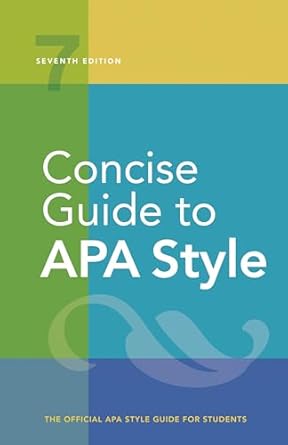[toc]
citing visuals apa style guide examples
Concise Guide to APA Style: 7th Edition (OFFICIAL)
Page 306 Review
Analyzing Visual Works Citations: A Deep Dive into APA Style
This excerpt from an ebook provides essential guidelines on citing visual works according to APA style.
Let’s break down these examples to understand the nuances of proper citation for various art forms.
Referencing Artwork in Museums
The ebook dedicates significant attention to artwork found in museums or on museum websites.
The examples provided, Delacroix’s lithograph and Wood’s painting, offer a clear template:
“Delacroix, E. (1826-1827).
Faust attempts to seduce Marguerite [Lithograph].
The Louvre, Paris, France.”
“Wood, G. (1930).American gothic [Painting].
Art Institute of Chicago, Chicago, IL, United States. https://www.artic.edu/aic/collections/artwork/6565″
Several key elements are evident here:
- Author’s Name: The artist’s last name and initials.
- Date: The year the artwork was created (or the range of years if applicable).
- Title: The full title of the artwork.
- Medium: A description of the medium in square brackets (e.g., [Lithograph], [Painting]).
- Location: The museum and city where the artwork is housed.
- URL (if applicable): A link to the artwork’s page on the museum’s website.
The text explicitly states the wide applicability of this format:
“Use this format to cite all types of museum artwork, including paintings, sculptures, photographs, prints, drawings, and installations; always include a description of the medium or format in square brackets after the title.”
This highlights the importance of specifying the medium, providing context for the reader.
Furthermore, the ebook addresses untitled artworks:
“For untitled art, include a description in square brackets in place of a title.”
This ensures that even without a formal title, the artwork is identifiable.
Citing Clip Art and Stock Images
The guide extends its reach to digital art forms, providing instructions for citing clip art and stock images:
“GDJ. (2018).
Neural network deep learning prismatic [Clip art].
Openclipart. https://openclipart.org/detail/309343/neural-network-deep-learning-prismatic”
Similar to museum artwork, the citation includes the creator (or the source), date, title, a description of the art form in square brackets, and the URL.
However, the ebook includes a crucial caveat:
“Use this format to cite (but not reproduce) most clip art or stock images.
To reproduce clip art or stock images, permission and/or a copyright attribution may be necessary in addition to the reference.
No citation, permission, or copyright attribution is necessary for clip art from programs like Microsoft Word or PowerPoint (see Section 8.36).”
This emphasizes the importance of copyright and permissions when reproducing digital images, reminding readers to differentiate between citation and reproduction rights.
Content from programs like Microsoft Word or PowerPoint are exempt under section 8.36.
Referencing Infographics
The final example demonstrates how to cite infographics:
“Rossman, J., & Palmer, R. (2015).
Sorting through our space junk [Infographic].
World Science Festival. https://www.worldsciencefestival.com/2015/11/space-junk-infographic/”
The structure remains consistent: authors, date, title, medium (in square brackets), and source.
The inclusion of the URL is particularly important for online infographics.
Parenthetical and Narrative Citations
The ebook also provides examples of parenthetical and narrative citations for each type of visual work.
These examples clarify how to incorporate the citations within the text:
- Parenthetical citation: (Delacroix, 1826-1827; Wood, 1930)
- Narrative citations: Delacroix (1826-1827) and Wood (1930)
These examples demonstrates how to cite multiple visual works in parentheses and how to weave the author’s name into the narrative.
Conclusion
This excerpt provides a concise yet comprehensive guide to citing visual works in APA style.
By providing clear examples and highlighting key considerations, the ebook equips readers with the necessary tools to properly attribute and reference various forms of art, ensuring academic integrity and respect for intellectual property.
The examples and explanations surrounding copyright and permissions for clip art and stock images is especially valuable in the digital age.
Buy full ebook for only $18: https://www.lulu.com/shop/american-psychological-association/concise-guide-to-apa-style-7th-edition-official/ebook/product-rmzpq54.html?page=1&pageSize=4
Citing Visuals Apa Style Guide Examples
Read more: Personality Functioning: Scales & Statistics Analysis</
Read more: Scholarly Writing: Avoiding Jargon & Maintaining Clarity</


Leave a Reply